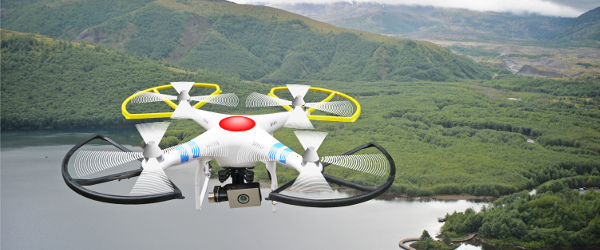
Chip-maker Qualcomm and network provider AT&T have partnered to test unmanned aircraft systems (UAS) or drones on commercial 4G LTE networks.
The companies want to anaylse how drones can operate safely and securely on commercial 4G LTE and future networks including the 5G. The research will also look into issues affecting future drone operations.
A team comprising of engineers and designers from both companies will look at coverage, signal strength, mobility across network cells and their functioning during the flight.
The team is working with an aim to develop future drone operations such as Beyond Visual Line of Sight (BVLOS). Qualcomm says that research in this field is necessary as regulations in the near future could permit drone operations.
It also said that a drone’s ability to fly beyond the line of sight of an individual can enable successful delivery, remote inspection and exploration. Wireless technology can also add ubiquitous coverage, high-speed mobile support, robust security, high reliability and quality of service (QoS).
The drones will be based on Qualcomm Snapdragon Flight drone development platform, which the company claims to have been developed with higher control and navigation capabilities.
It also says that in some of the drones that are commercially available, the system is already in place and it offers high fidelity sensor processing, precise localisation, autonomous visual navigation and 4K video shooting capabilities into a single module.
The trials are expected to begin later this month at Qualcomm Technologies’ campus in San Diego. Testing will conducted at the Qualcomm’s FAA (Federal Aviation Administration)-authorised UAS Flight Center and test environment.
Qualcomm says that it has created real-life conditions including commercial, residential, uninhabited areas and in FAA controlled airspace.
Qualcomm Technologies executive vice president and chief technology officer Matt Grob said: “The trial with a carrier with the reach and technology of AT&T is a significant step in the development of connectivity technologies for small unmanned aircraft systems (SUAS), including optimisation of LTE networks and advancement of 5G technology for drones.
“Not only do we aim to analyse wide-scalable LTE optimisation for safe, legal commercial SUAS use cases with beyond line-of-sight connectivity, but the results can help inform positive developments in drone regulations and 5G specifications as they pertain to wide-scale deployment of numerous drone use cases.”






